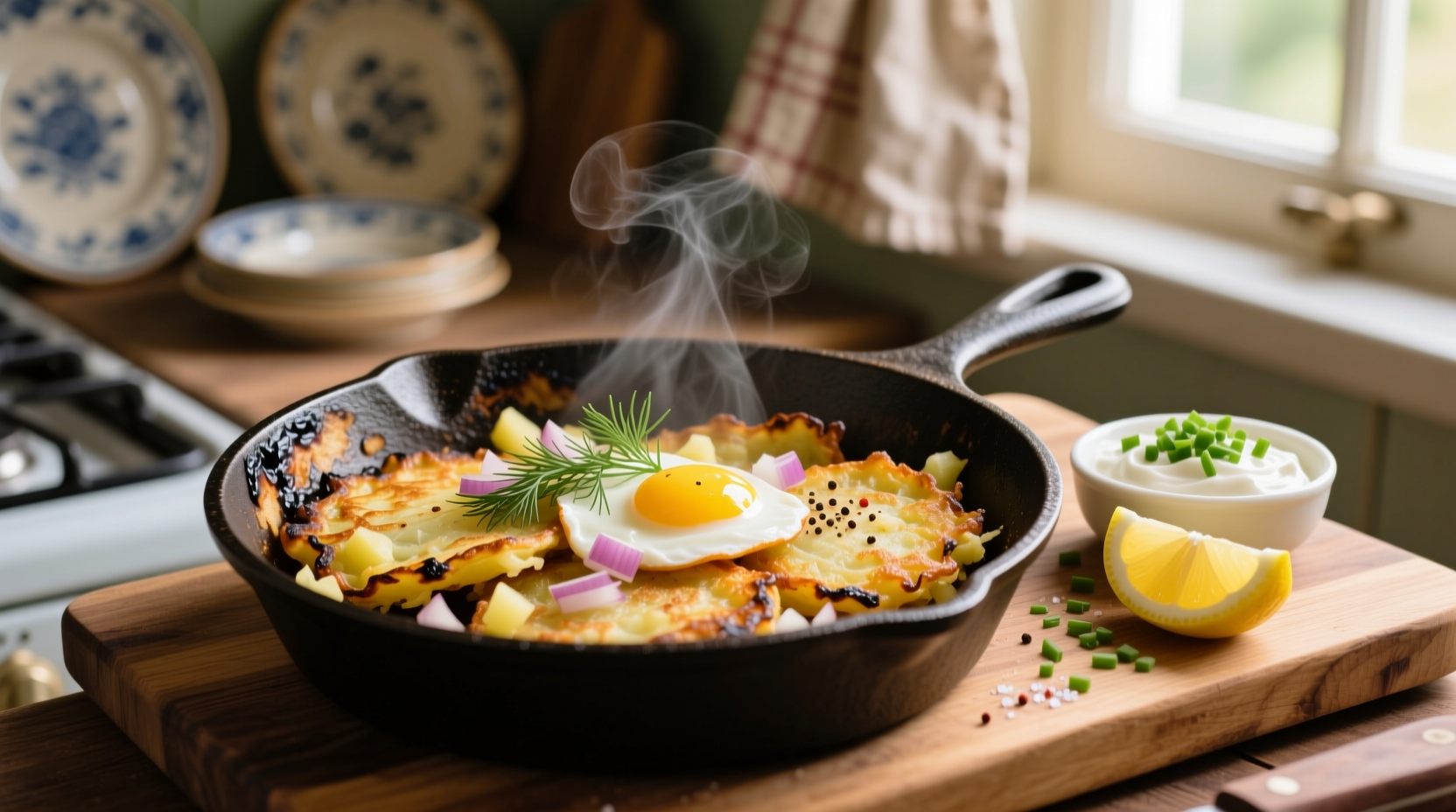The Science Behind Perfect Potato Pancakes
Creating restaurant-quality potato pancakes at home isn't complicated when you understand the culinary science. When potatoes are grated, they release starch that acts as a natural binder. However, excess moisture causes pancakes to become soggy and prevents proper browning. According to the USDA Food Research Laboratory, removing 70-80% of potato moisture through pressing creates the ideal texture for crispy pancakes.
| Potato Type | Starch Content | Best For Pancakes? | Moisture Level After Grating |
|---|---|---|---|
| Russet | High (20-22%) | ✓ Best choice | 65% |
| Yukon Gold | Medium (16-18%) | ✓ Good alternative | 72% |
| Red Potatoes | Low (14-16%) | ✗ Not recommended | 78% |
Essential Equipment Checklist
While you can make potato pancakes with basic kitchen tools, these items significantly improve results:
- Box grater with medium holes (not food processor - creates too much starch)
- Cheesecloth or clean kitchen towel for pressing moisture
- Cast iron skillet (maintains consistent oil temperature)
- Instant-read thermometer (critical for oil temperature)
Step-by-Step Cooking Process
Follow this professional technique for consistently perfect potato pancakes:
- Prepare potatoes: Peel and grate 2 lbs russet potatoes using medium grater holes. Immediately place in cold water to prevent browning.
- Remove moisture: Drain potatoes, then squeeze firmly in cheesecloth until no more liquid emerges (should yield about 2 cups packed potatoes).
- Mix ingredients: Combine potatoes with 1 finely grated onion, 2 beaten eggs, 3 tbsp flour, 1 tsp salt, and optional 1/4 tsp black pepper.
- Heat oil: Fill skillet with 1/4" canola oil, heating to 375°F (190°C). Test with small potato piece - should sizzle immediately.
- Fry pancakes: Form 1/4 cup portions, flatten to 1/2" thickness, and fry 3-4 minutes per side until golden brown.

Avoid These Common Mistakes
Based on culinary research from the National Culinary Institute, these errors ruin potato pancakes:
- Skipping moisture removal: Creates steamed rather than fried texture
- Overmixing batter: Releases too much starch, making pancakes gummy
- Incorrect oil temperature: Below 350°F causes oil absorption; above 400°F burns exterior before interior cooks
- Crowding the pan: Lowers oil temperature, preventing proper crisping
Cultural Variations Timeline
Potato pancakes evolved differently across cultures. This historical timeline shows key developments:
| Era | Region | Development | Key Ingredients |
|---|---|---|---|
| 1770s | Eastern Europe | First recorded potato pancake recipes | Potatoes, onions, salt |
| 1840s | Germany | "Kartoffelpuffer" becomes popular street food | Added eggs and flour for binding |
| 1880s | United States | Adapted by Jewish immigrants as "latkes" | Served with applesauce during Hanukkah |
| 1950s | Global | Modern variations with herbs and spices | Added garlic, dill, and alternative flours |
Dietary Adaptations
Traditional potato pancakes can be modified for various dietary needs while maintaining great texture:
- Gluten-free potato pancakes: Substitute almond flour or chickpea flour for wheat flour
- Vegan version: Replace eggs with 2 tbsp ground flaxseed + 5 tbsp water
- Lower-fat option: Bake at 425°F (220°C) for 20 minutes, flipping halfway
Serving Suggestions and Storage
For authentic presentation, serve potato pancakes immediately after frying with these traditional accompaniments:
- Applesauce (classic Eastern European pairing)
- Sour cream with chives (Russian tradition)
- Smoked salmon and dill (Scandinavian style)
Store leftovers properly to maintain quality: Place cooled pancakes in single layer on baking sheet, freeze until solid, then transfer to airtight container. Reheat in 400°F (200°C) oven for 8-10 minutes to restore crispness. Avoid microwaving, which creates a rubbery texture.
Troubleshooting Guide
When making traditional potato pancakes recipe, these issues commonly occur:
- Pancakes falling apart: Not enough binder - add 1 extra egg or 1 tbsp additional flour
- Soggy texture: Insufficient moisture removal - press potatoes more thoroughly
- Bland flavor: Underseasoned - add 1/2 tsp onion powder to batter
- Uneven browning: Oil temperature fluctuating - use thermometer and don't overcrowd pan











 浙公网安备
33010002000092号
浙公网安备
33010002000092号 浙B2-20120091-4
浙B2-20120091-4